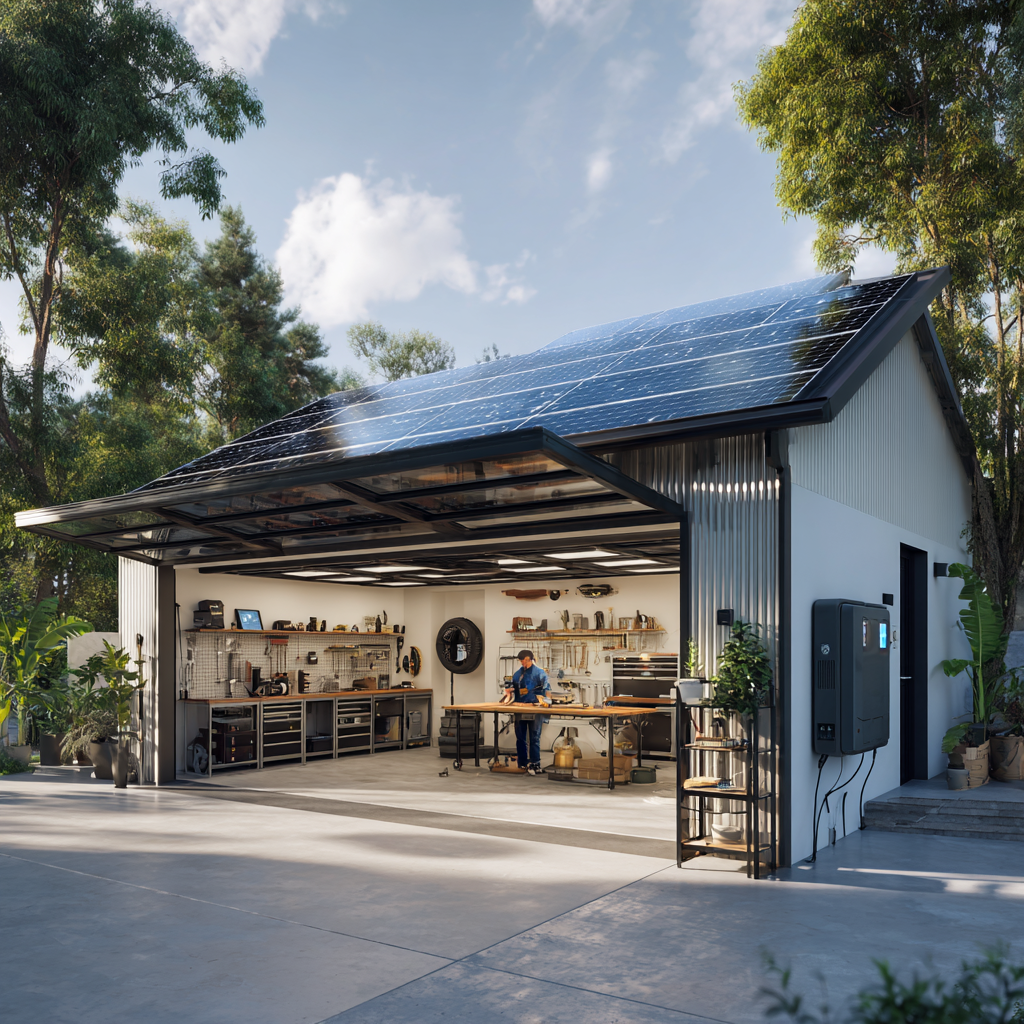Comprehensive Smart Lighting Guide for Beginners

Transform Your Home Into a Smart Paradise - 2025 Guide
Discover the latest smart home technology that will revolutionize your daily routine.
Smart lighting is the easiest way to start home automation. In this comprehensive guide, I'll show you how to select the right components, set up the system, and utilize all possibilities of modern smart lighting in 2025.
What is Smart Lighting and Why Want It?
Smart lighting allows you to control lights using your phone, voice, or automatically according to set scenarios. Compared to classic bulbs, it offers:
- Remote control - turn on/off from anywhere
- Dimming - set light intensity
- Color variants - millions of colors for different moods
- Automation - lights respond to your movement, time of day, or routines
- Energy savings - LED technology + intelligent control
Basic Smart Lighting Components
1. Smart Bulbs
Types by functionality:
- White dimmable ($32-60) - basic functionality
- Tunable white ($40-80) - warm to cool white
- Color RGB ($60-120) - 16 million colors
Best 2025 brands:
- Philips Hue - highest quality, but most expensive
- IKEA Trådfri - excellent value for money
- TP-Link Tapo - budget variant with good features
- WiZ - by Signify, cheaper alternative to Hue
2. Smart Switches
For controlling classic bulbs or entire circuits:
- Shelly - small modules behind switch ($24-48)
- Sonoff - cheap alternative ($12-32)
- Aqara - elegant design, requires hub ($32-60)
3. LED Strips
Ideal for indirect lighting:
- Basic RGB ($20-40/16ft)
- RGBW with white ($32-60/16ft)
- Addressable ($60-120/16ft)
4. Motion Sensors
For automatic activation:
- Philips Hue Motion ($48)
- IKEA Trådfri ($16)
- Aqara Motion ($24)
How to Start - Step by Step
Step 1: Choose Ecosystem
For beginners I recommend:
- IKEA Trådfri - best value for money
- Philips Hue - if you want top quality
- TP-Link Tapo - when you don't want a hub
Step 2: Basic Kit
Starter package should include:
- 3-4 smart bulbs
- Hub/bridge (if needed)
- At least 1 motion sensor
- Remote control (backup to phone)
Budget: $120-240
Step 3: Installation
1. Download manufacturer app
2. Connect hub to router (if you have one)
3. Screw in bulbs
4. Add them in app
5. Set rooms and names
Practical Usage Scenarios
Morning - Sunrise Simulation
- Gradual brightening 30 minutes before alarm
- Warm white light simulating sunrise
- Automatic shutdown after leaving
Evening - Relaxation Mode
- Dimmed warm light
- Automatic dimming after 9:00 PM
- Night light in bathroom with motion sensor
Movie/TV Mode
- Dim main lighting
- Color backlighting behind TV
- One button or voice activation
Security Mode
- Presence simulation during vacation
- Random on/off switching
- Reaction to outdoor motion
Advanced Features and Automation
Geofencing
Lights turn on when you approach home:
IF: Distance from home < 1650ft
AND: Time > sunset
THEN: Turn on entrance lights
Circadian Rhythm
Automatic color temperature change throughout day:
- Morning: 5000K (cool white) - wake up
- Day: 4000K (neutral) - work
- Evening: 2700K (warm) - relaxation
Integration with Other Devices
- Alexa/Google Home - voice control
- Home Assistant - advanced automations
- IFTTT - connection with other services
Common Problem Solutions
Bulb Not Responding
- Check WiFi connection
- Turn switch off/on 5x quickly (reset)
- Remove and re-add in app
Control Delay
- Use hub instead of WiFi (Zigbee is faster)
- Check WiFi signal strength
- Update firmware
Lights Turn On Randomly
- Check set automations
- Verify no one else has access
- Disable "adaptive lighting" features
Energy Savings and ROI
Savings Calculation
Classic 60W bulb vs. Smart LED 9W:
- Savings: 51W per bulb
- At 5h daily: 93 kWh/year
- At $0.12/kWh: $11.16/year savings
Investment return:
- Smart bulb $60
- Payback in 5-6 years
- LED lifespan: 15-20 years
Tips for Maximum Savings
- Use timers and automation
- Dim lights when full brightness not needed
- Turn off lights automatically when leaving
- Utilize daylight
Recommended 2025 Products
Budget Variant (under $200)
- IKEA Trådfri Gateway + 4 bulbs + controller
- TP-Link Tapo L530E - 4 pieces (WiFi, no hub needed)
Mid-range ($200-400)
- Philips Hue Starter Kit - bridge + 3 bulbs
- WiZ starter set + LED strip
Premium ($400+)
- Philips Hue complete system
- Lutron Caseta - professional solution
Security and Privacy
Network Security
- Use strong passwords
- Separate IoT devices on guest WiFi
- Regularly update firmware
Privacy Protection
- Read terms of use
- Disable cloud features if not needed
- Prefer local control (Zigbee)
Frequently Asked Questions (FAQ)
Do I need an electrician? No, smart bulbs just screw in. For smart switches maybe yes.
Does it work without internet? Basic functions yes (with hub), advanced no.
Is it compatible with my phone? Yes, all systems have apps for iOS and Android.
Can I mix different brands? Yes, through Google Home, Alexa, or Home Assistant.
Conclusion
Smart lighting is a great entry into the smart home world. Start with a small project in one room and gradually expand. The investment pays back not only in savings, but mainly in convenience and new possibilities that classic switches don't offer.
Final tip: Start with IKEA Trådfri set for around $80. It's the best way to try smart lighting without a big investment.
Related Articles
Smart Home Upgrade Package 2025
Transform your home with the latest smart technology
Transform Your Home Into a Smart Paradise - 2025 Guide
Discover the latest smart home technology that will revolutionize your daily routine.

